Raising frogs for its meat
Have you ever tasted frog meat? Be it fried, adobo, sinampalukan, it always tastes like chicken! Of course there are frog species that are edible, one of them is called “palakang bukid” (rice field frogs), the one with slippery-smooth skin and large legs.
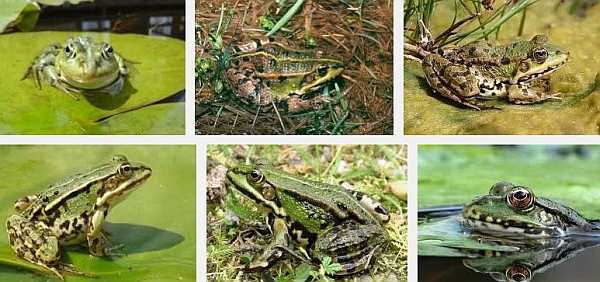
Frog meat is considered a delicacy in other Asian countries too like Japan and China. So if you’re both frog eaters and frog lovers, maybe you can consider getting into this business.
How to Raise Frogs for Meat- Raising Edible Frogs
The bulldog frog is considered a specialty in some countries because this is not commonly served and is unknown to many. Here in the Philippines, the frogs that are edible are the (rice fields) frogs that can be raised. When the frog is mature, this grows as long as 14 inches when stretched, and can weigh as much as half a kilo or more. It can thrive on land or in water.
The male frog has ears larger than its eyes, the females have the eyes as big as the ears. The females are bigger, but the males have their forelegs longer and stronger. The throat of the mating males is yellow and enlarged (inflamed) while that of the female is white.
The eyes of the frog are protruding and large and yellow; the tongue is long and sticky. They have no neck with which to turn the head around, so their protruding eyes are used to look upward, downward and around. Behind their eyes are large ears or hearing organ (tympanium) that are sensitive to sound and tremor in their environment.
In their natural habitat, frogs live in streams , ponds, water canals, rice folds and almost everywhere that there is water and vegetation where insects thrive. They feed on soft plants growing in the water like algae, and on fishes (even dead), insects, liver, cooked flour products, boiled potatoes, fresh meat and chicken and visceral, and meat even not fresh. The mature ones also live on insects, crabs, water insects, snails, shrimps, spider, crickets, grasshoppers, fish, snakes, termites, worms, wrigglers, earthworms, young turtles and birds. They like live foods to those that are alive and moving.
Egg laying
Frogs lay eggs from April to September. The eggs are laid on a thin sheet on a leaf top above the water. After the female lays eggs, the male frog fertilizes them from outside, and places them afterwards in an egg mass in the water. After 5-10 days, the eggs are hatched. From 10,000 – 20,000 eggs normally laid, only about 30%or less are hatched, live up to the tadpole stage, depending on the temperature of the water. The small frogs will grow and live on the plants in the water. The shape is like a narrow fish, with gills for breathing, without legs and with a tail for swimming.
The small ones will grow, a few weeks to a few months, and will become a full fledged frog. They will lose their gills but will develop lungs; discard the tail but four feet will grow; the intestines will be shorter and the mouth will be that of a frogs. At this time, the growing frog will live longer on land than in the water.
Diseases & pests of frogs
Frogs are susceptible to a bacterial disease called “red legs” due to overcrowding and contamination caused by pollution and lack of oxygen in the pond. Many of the young ones fall pretty to the disease. Setting up & care of a frog farm
A frog may be a few meters square in ones backyard or a hectare size, depending on ones place and capability for investment and care. In constructing a pond, the following should be considered:
- The place must be such that it logs water, as in clay; if this is not so, cement the sides of the pond and provide water outlet and inlet.
- The place must be near a body of water like a stream or irrigation.
- The rice field is the best for frog raising.
- Avoid places that get flooded.
- The place must be fenced to avoid the escaping of frogs, and so that enemies like cats, snakes, lizards of big frogs are kept off.
- Plant shady trees like bananas or vines at the place and allow grass to grow on vacant places. Bamboos can also be used to shade.
- Provide strong light to attract insects.
- Plant flowering plants around to attract insects.
Care of small & growing frogs
The frog nursery should have cemented sides around at 4X1 meters and about half a meter deep. This can accommodate about 5,000 small frogs.
1. The surface of the cemented side should be coarse to allow the growth of moss and algae that the small frogs eat. Give also cooked flour to supplement their feed.
2. Put above some shade-climbing plants on bamboo or banana leaves.
3. Keep the water clean, so there must be an outlet for the soiled water and inlet for fresh new water.
4. The mass of eggs on the sticky surface should be transferred to the nursery. The eggs are placed on a hanging fine nylon net so that eggs that will not hatch will not spill over. These are likely jelly that pollute the water where it will drop into.
5. The eggs will hatch in 4-10 days, depending on the water temperature. These are like wrigglers if alive, and will leave the net.
Transfer cage
The small frogs that are wrigglers will be transferred to another cage when the legs are beginning to grow and the tail begins to disappear. A cage 2x6x.5 m deep can accommodate about 4,000 small ones.
- Feed the small frogs with food that is live-small worms, earthworms, and termites which they like at about 4:00 p.m. when they are most active.
- At this time, because they have no scales, their skin can dry up so they must always be near a body of water.
- The side of the cage around must be slanting where the frogs get trained in suing their legs, which is important as they grow, to develop leg muscles (for meat production).
- Place a hanging nylon tray about ½” X 2″ above the surface to serve as feeding space and rest for the young frogs.
- Place a 10-wat fluorescent lamp at the sides to attract insects at night.
- When these have grown to 2.5-3″ in size, they can be transferred to the rearing ponds. The pond must be cemented and I about half a meter deep.
Rearing ponds
- The ponds must have ample shore. Provide shades by planting banana trees and grasses around.
- Plant flowering plants to attract insects and make water insects and guppies thrive in the pond for the frogs to feed on.
- Earthworm, termites and maggots serve as supplementary food.
- The frog population in the pond should be one frog for every 2.5 or 3 sq. ft.
- Place bamboo slats in corner that will serve as shade and rest for the frogs. Cover this with banana leaves. These shed are bamboo pcs 2m x 3m elevated about 5 cm from the ground and extended about one-half meter over the ponds water.
- Place the lights here.
- Beneath this are nylon trays 1 X 2m supported by 1.5″X 2″ wood pieces around.
Breeding
The breeding pond is like the rearing pond although smaller. Place here the healthiest and biggest frogs for breeding. The number of males is almost equal to that of females because the males sometimes mate only once to a single female. Before the time comes for egg laying, put frogs together so they can be adjusted to their new environment and thus make egg laying good. The population is about 2 frogs for every square meter in the whole cage.
source: elgu2.ncc.gov.ph
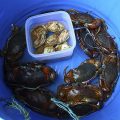

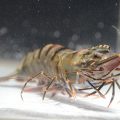
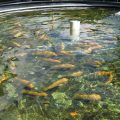
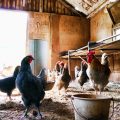
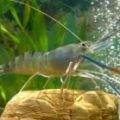

Frogs are susceptible to a bacterial disease called “red legs” due to overcrowding and contamination caused by pollution and lack of oxygen in the pond. Many of the young ones fall pretty to the disease. Setting up & care of a frog farm
Please advise me where to buy small frog for raise for meat.thanks…
This is a great article, I’m looking at raising frogs for meat production, and you gave me the guidelines I’m looking for.
Thanks!
Saan po makakabili ng Palakang Bukid, to start breeding? Please advise…..
Please provide details if you can supply more than 1000 small frog.
my email is Christ.Aranas1@gmail.com
taga saan ka pare bibili din ako
where to buy breeder frogs in the -philippines
I can suply frogs sir
i am interested to buy , please PM. Thanks.
please send information, im interested
Kindly advise your contact number and address. Interested po.
hello, do you know someone here in the philippines whos raising this frogs? i am much more willing to buy
Thanks Be To God.
where can I buy a small frog for raise for meat?